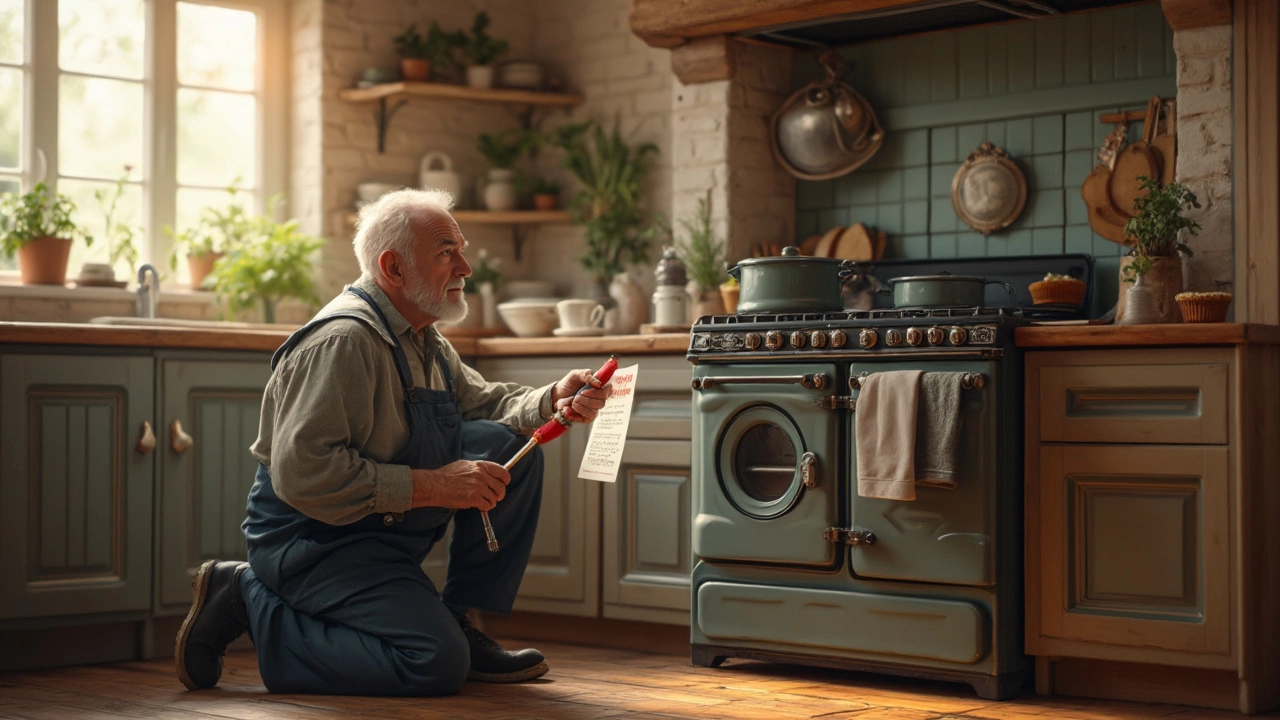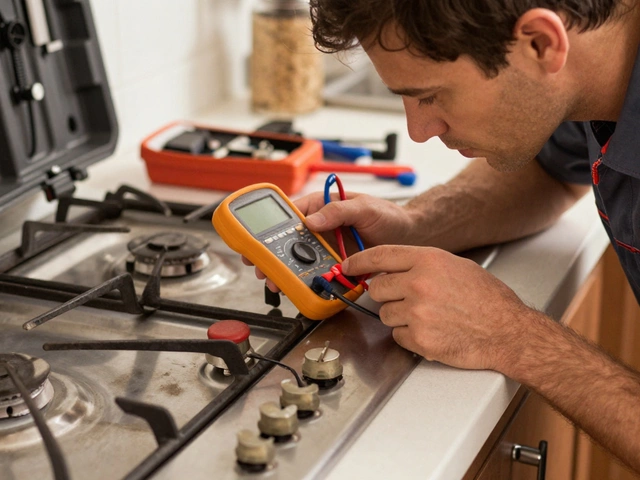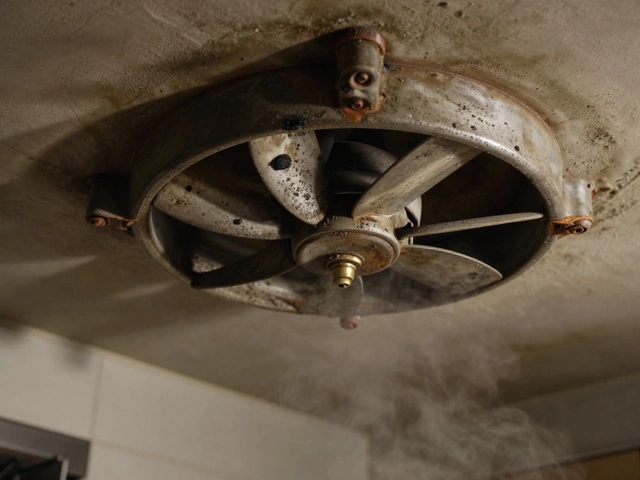So, your gas oven's acting up, and you're probably wondering if fixing it is worth the hassle. We've all been there, staring at an appliance that seems more trouble than it's worth. But before you haul it to the curb, let's break down the pros and cons and look at some practical steps.
Sometimes, your oven woes are simpler than they seem. Common issues like uneven heating or strange noises could be tackled with a bit of tinkering. Loose burners, a faulty igniter, or even a broken thermostat are typical culprits that might just need a little attention. But, figuring out when to grab your toolbox or call in a pro can be tricky.
Is it just me, or does it feel like every repair decision comes with a price tag that smiles back at you? Evaluating the cost will make things clearer. Basic repairs might just set you back a couple of hundred bucks, but if the numbers start creeping higher, it might be time to weigh the benefits of a bright, shiny, new model.
The age of your oven also plays a big role. If it's getting up there in years, shelling out for multiple repairs might not be the best financial move. Considering the expected lifespan of a gas oven can guide your decision-making.
- Common Gas Oven Problems
- DIY Fixes vs Professional Repairs
- When to Opt for a Replacement
- Cost Considerations
- Maintenance Tips to Extend Life
Common Gas Oven Problems
Is your gas oven repair situation a mystery worth solving? Let's break it down with some of the most frequent head-scratchers folks face.
1. Oven Not Heating Properly
If your oven's temperature is more unreliable than Auckland's weather, the main suspect could be the igniter. When the igniter's weak, it'll struggle to warm up. You might notice this if your food's taking far longer to cook, or if the oven simply refuses to heat altogether. Replacing the igniter can often do the trick.
2. Strange Noises During Operation
Gas ovens aren't supposed to sound like a symphony of squeaks and groans. If yours does, worn-out motor bearings might be the culprits. A quick listen can usually pinpoint the motor as the source, especially if it sounds like it's working overtime. Address this sooner rather than later to avoid bigger issues.
3. Uneven Cooking
No one likes half-baked food—literally. Uneven cooking is often due to faulty thermostats or poor calibration. A DIY calibration might help, but if not, the thermostat could need replacing.
4. Burner Won't Light
If you're trying to prepare dinner but your burner isn't cooperating, check out the ignition system. A faulty ignition switch or blocked pilot light might be throwing a wrench in your plans. A good cleaning can sometimes clear this up, but replacement parts might be needed if it's more serious.
| Problem | Possible Cause | Solution |
|---|---|---|
| Not Heating Properly | Faulty Igniter | Replace Igniter |
| Strange Noises | Worn Motor Bearings | Check and Replace Bearings/Motor |
| Uneven Cooking | Incorrect Thermostat | Calibrate or Replace Thermostat |
| Burner Won't Light | Blocked Pilot or Bad Switch | Clean or Replace Parts |
Kicking these issues to the curb can extend the life of your appliance, making your investment in fixing it a little less of a gamble. But remember, some fixes are better left to the pros, especially if handling gas connections gives you the heebie-jeebies.
DIY Fixes vs Professional Repairs
Deciding whether to tackle a gas oven repair by yourself or call a professional can be a head-scratcher. There are clear pros and cons to both options, and it comes down to the nature of the problem and your comfort level with DIY tasks.
DIY Fixes You Can Try
First off, if the problem seems minor, it's worth checking out some DIY fixes before grabbing your phone to call the pros. Here are a few common issues you might be able to handle:
- Uneven Heating: Sometimes, the solution could be as simple as adjusting the burner flames or cleaning the burners. A blocked burner hole can distribute heat unevenly.
- Igniter Not Working: If the igniter isn't glowing or there's a delay in the flame catching on, it might need a clean. Carefully remove debris and clean it with a small brush.
- Oven Not Heating: Check if the gas supply is working fine. Sometimes resetting the oven controls or replacing a malfunctioning thermostat can work wonders.
Always remember, safety comes first. If it involves gas lines or you're dealing with something electrical, know your limits and don't hesitate to call a professional.
When to Call in a Professional
There are times when you should definitely engage a professional. If you've tried the simple fixes and the oven remains stubborn, it might be a sign of deeper issues.
- Gas Smell: This is serious. If there's a persistent gas odor, contact a technician immediately to inspect the gas connections and valves.
- Control Board Problems: Got blinking lights or erratic behavior? These gadgets can be finicky, and a trained eye might be needed to diagnose control board faults.
- Recurrent Issues: If the same problems keep cropping back up, it might be indicative of a wear-and-tear issue needing professional expertise.
According to a recent survey, about 60% of appliance repairs get fixed right the first time by a professional, versus a 30% success rate for DIY repairs. This suggests that while DIY might save some money, expertise and experience can make a big difference when facing more complex issues.
Choosing between DIY and professional repair isn't always clear-cut. Evaluate the specific gas oven repair problem you're facing, your comfort level with handling it, and the potential risks involved before deciding your path forward.
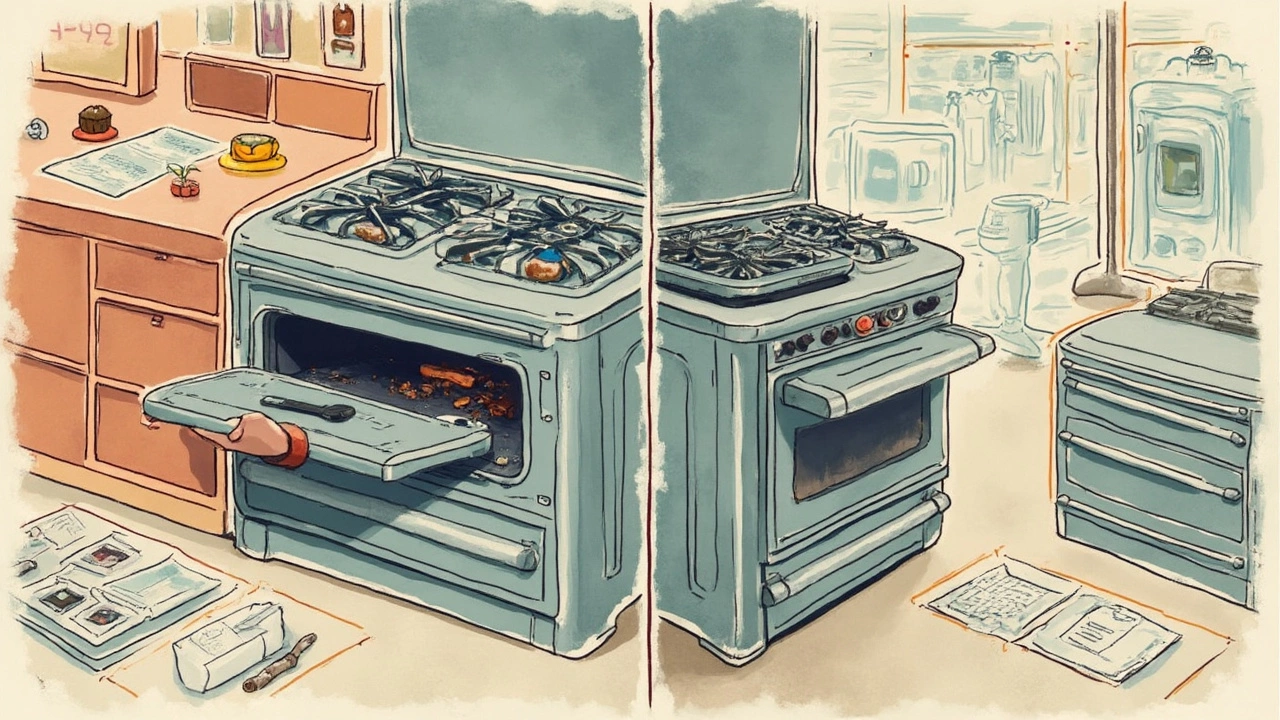
When to Opt for a Replacement
So, when exactly do you pull the plug and go for a new oven instead of fixing your old one? Good question. First off, consider the age. Most gas ovens have a lifespan of about 15 years. If yours is pushing that limit and starting to show signs of wear, it might be time to think about a replacement.
Another big signal is the cost of repair. If the repair bill is more than half the price of a new oven, you might be better off investing in a newer model. Not only do new ovens come with snazzy features, but they can also be more energy-efficient, saving you some cash on those pesky power bills.
Let's not forget about safety. Gas appliances, when they're on the fritz, can pose risks like leaks or carbon monoxide emissions. If your gas oven repair feels like more of a gamble with your safety, don't hesitate to replace it. Your peace of mind is priceless.
You should also consider the frequency of repairs. If you keep shelling out money to fix your oven every other month, you're probably throwing money down the drain. It might be time to stop the cycle and upgrade to something more reliable.
Cost vs. Benefits
When balancing cost and benefits, don't forget about potential rebates or incentives for energy-efficient models. Sometimes, spending more upfront pays off when considering future savings.
| Average Lifespan | Repair Cost vs. Replacement |
|---|---|
| 15 Years | If repair > 50% of new |
Wrap it up by asking yourself if you'll feel more excited about fixing up your old appliance or bringing a brand new one into your kitchen. If it's the latter, it might be time for a trip to the store.
Cost Considerations
Alright, so before splashing the cash on gas oven repair, it's smart to have a money chat. The cost of fixing your gas oven can vary, depending on a few factors like what exactly is broken and how old your appliance is. Let's dive into these cost considerations.
Breakdown of Common Costs
Minor repairs, such as a simple igniter replacement, might cost anywhere from $150 to $250. Not too steep, right? But, start looking at major issues, like a faulty control board, and you could be eyeing up a bill closer to $500 or more.
Labor and Service Fees
Another thing to keep in mind is labor and service fees. Depending on who you hire, this can be anywhere from $50 to $100 per hour in Auckland. If the repair takes longer than expected, costs can mount quickly, eating into your budget.
Cost vs Age of the Oven
Now, let's talk age. If your oven is over 10-15 years old, spending half the price of a new one on repairs might not be the best move. Newer models can offer energy savings and handy new features. If your current oven is guzzling energy, a new one might save money in the long run.
Replacement Costs
So, if you decide to replace instead of repair, what then? New gas ovens range from $600 to over $1,500, depending on size and features. It's a bigger upfront cost, sure, but sometimes it pays to invest in something that'll stick around.
Get an Estimate First
Before you make any big decisions, it's always a good idea to get an estimate from a professional. They can provide a clearer picture of what you're looking at in terms of price and help you weigh the pros and cons of repair versus replacement.
Whether you choose to fix or nix, keeping these cost considerations in mind will put you in a stronger position to make the best choice for your home and wallet.
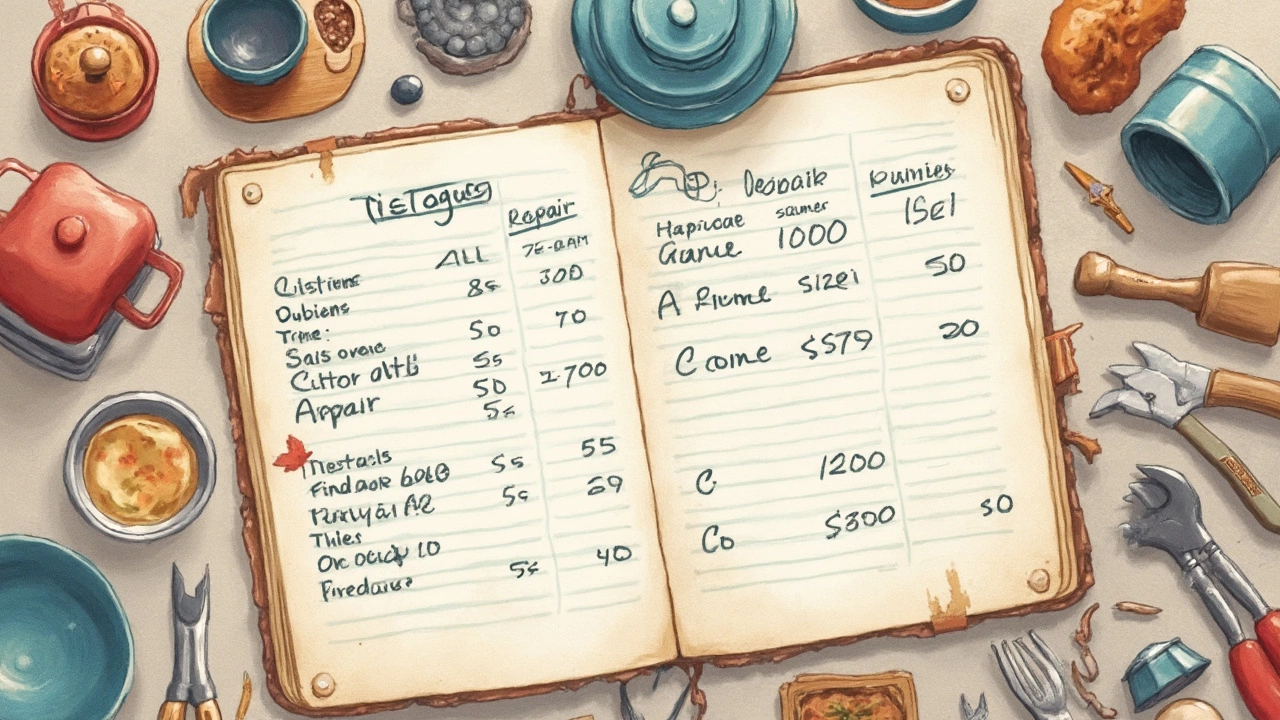
Maintenance Tips to Extend Life
Proper care goes a long way, just like how regular gym sessions keep us in shape. With gas ovens, a little attention can make a huge difference, not just in performance but also longevity. Here are some practical tips to keep your trusty oven running smoothly.
Regular Cleaning
Seems obvious, but cleaning is often neglected. Grime and food particles can clog up those burners, messing with your heating efficiency. Every few weeks, give your oven a good scrub. Just make sure it's off and cool first!
- Remove the racks and soak them in warm, soapy water.
- Wipe down the interior with a mixture of vinegar and baking soda for stubborn stains.
- Avoid using harsh chemicals that could harm the surfaces.
Check the Burners and Igniter
Your gas oven relies on these components to light up. If the flame is weak or not igniting at all, it's time to do a quick inspection.
- Carefully remove and clean the burners with a soft brush to unclog them.
- Inspect the igniter for wear. A weak spark might mean it needs replacing.
Seal the Deal
The door seal keeps all that precious heat inside your oven. A damaged seal can mean bigger energy bills and uneven cooking.
- Run your hand around the door to feel for leaks when it's closed.
- Replace the seal if it's cracked or worn.
Keep an Eye on the Thermostat
Miscalibrations happen, and they can turn your perfect roast into a disaster. Use an oven thermometer to watch the temp inside. If there's a big difference, consider recalibrating or replacing the thermostat.
Regular Professional Check-Ups
Think of this as your oven’s version of a doctor visit. Every couple of years, having a technician give it the once-over can nip problems in the bud before they get worse.
By following these steps, you can keep your oven maintenance simple and effective, ensuring you get the most out of your appliance without unexpected breakdowns.

